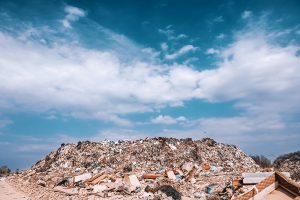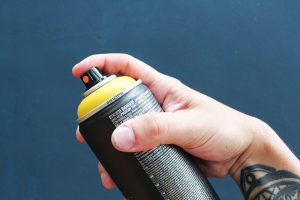
If a business or manufacturing facility is going to work at peak functionality and still abide by all environmental laws endemic to its location, it is necessary to first be fully aware of local industrial waste rules regulations. In the United States, most states take their cues and guidance from the Environmental Protection Agency (EPA) which sets the standard for the country at large. Rules are also applied at the state and municipal levels to better regulate industrial and hazardous waste.
The EPA regulates household, industrial, and manufacturing solid and hazardous wastes under the Resource Conservation and Recovery Act (RCRA). RCRA’s goals are to protect communities and citizens from the hazards of waste disposal; conserve energy and natural resources by recycling and recovery; reduce or eliminate waste; and clean up waste that may have spilled, leaked or been improperly disposed of.
Industrial Waste Bound for Landfills
 The EPA has developed minimum technical criteria that industrial landfills must meet. Solid waste disposal, including nonhazardous industrial waste, is overseen by the states. Some states may impose requirements that are more stringent than the federal requirements.
The EPA has developed minimum technical criteria that industrial landfills must meet. Solid waste disposal, including nonhazardous industrial waste, is overseen by the states. Some states may impose requirements that are more stringent than the federal requirements.
One of the most stringent measures of an environmentally safe landfill is frequent monitoring for groundwater contamination. Every municipality must have the ability to monitor the underlying groundwater for contamination during the site’s active life. The exceptions to this requirement are small landfills that receive less than 20 tons of solid waste per day, and facilities that can demonstrate that there is no potential for the migration of hazardous constituents from the unit into the groundwater.
What is a Hazardous Waste?
Simply defined, a hazardous waste is a waste with properties that make it dangerous or capable of having a harmful effect on human health or the environment. Hazardous waste is generated from many sources, ranging from industrial manufacturing process wastes to batteries and may come in many forms, including liquids, solids, gasses, and sludges.
The EPA has developed a regulatory definition and process that identifies specific substances known to be hazardous and provides objective criteria for including other materials in the regulated hazardous waste universe.
In order for a material to be classified as a hazardous waste, it must first be a solid waste. Therefore, the first step in the hazardous waste identification process is determining if a material is a solid waste.
The second step in this process examines whether or not the waste is specifically excluded from regulation as a solid or hazardous waste.
Hazardous Waste Violation and Penalties
 There are numerous laws at the federal level protecting damage done to the environment by individuals and business enterprises. A person who treats, stores, or disposes of a hazardous waste without a permit or being in knowing violation of a material permit condition can receive imprisonment from anywhere between two to five years as well as incur a financial penalty. Incarceration terms increase for subsequent violations.
There are numerous laws at the federal level protecting damage done to the environment by individuals and business enterprises. A person who treats, stores, or disposes of a hazardous waste without a permit or being in knowing violation of a material permit condition can receive imprisonment from anywhere between two to five years as well as incur a financial penalty. Incarceration terms increase for subsequent violations.
State Ordinances in Conjunction with the EPA
The EPA has established basic hazardous waste management standards for businesses who produce hazardous waste and categorized these businesses based on the volume of hazardous waste produced in a calendar month. On both the state and at the federal level, there are three generator categories: very small, small and large quantity generators.
Some states are authorized to establish generator categories that are different from those that the federal EPA set up. To help current and potential hazardous waste generators follow the regulations in their state, the EPA lists the states that have regulations that differ from the federal regulations and which states have the same generator categories. The EPA also lists links to rules or guidance for those states that have different regulations regarding industrial waste disposal. These states are: California, Kansas, Maine, New Hampshire, Rhode Island and Washington as well as the District of Columbia.
Aerosol universal waste rule
 Aerosol cans are widely used for dispensing a broad range of products including paints, solvents, pesticides, food and personal care products, and many others. The Household & Commercial Products Association estimates that 3.75 billion aerosol cans were filled on the national level in the United States within the last ten years for use by commercial and industrial facilities as well as by households. Aerosol cans can account for nearly 40 percent of retail items that are managed as hazardous waste at large retail facilities.
Aerosol cans are widely used for dispensing a broad range of products including paints, solvents, pesticides, food and personal care products, and many others. The Household & Commercial Products Association estimates that 3.75 billion aerosol cans were filled on the national level in the United States within the last ten years for use by commercial and industrial facilities as well as by households. Aerosol cans can account for nearly 40 percent of retail items that are managed as hazardous waste at large retail facilities.
The Benefits of the KenBay HazPac
The KenBay Industrial Hazpac Hazardous Industrial Waste Compactor not only keeps your facilities’ waste confined to a specific area, it also has an incredibly small footprint. This means that you can place it right at the site where hazardous waste is created, cutting down not only on the time hazardous waste disposal takes, but also the distance it has to travel.
The risks of contamination will decrease significantly. The HazPac can also contain six times as much hazardous waste as a conventional waste can, which will greatly decrease the packaging and removal costs.
Don’t take hazardous waste disposal lightly. It is a serious matter that requires a legal and thoughtful plan. There are many resources to help you make sure your hazardous waste disposal is as efficient and safe as possible, including waste management experts like KenBay. Give us a call to see how we can help you with your hazardous waste disposal plan.


